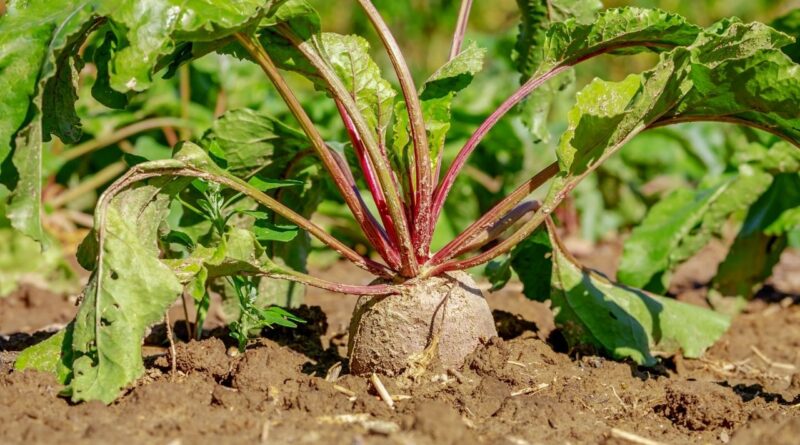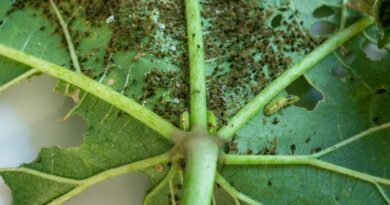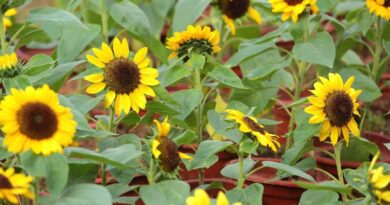How To Grow Beetroot
BEETROOT FARMING
Beetroot (Beta vulgaris) is an herbaceous biennial root vegetables in the family Chenopodiaceae grown for its edible root.
The plant is usually erect with a long main root and a rosette of leaves growing on stems. The leaves are oval in shape, arranged alternately on the stem and grow to 20–40 cm in length. The roots are usually red in color and it produces sessile green flowers.
Beetroot is generally easy to grow and is consistently ranked as one of the top vegetables grown in home gardens.
In Kenya, Beetroot farming has become more popular, with the major producing counties being Nakuru, Kiambu and Tharaka Nithi.
VARIETIES
The following are some of the Beetroot varieties grown in Kenya
Bolt hardy – has a good flavour, smooth skinned round roots, good bolt resistance
Detroit 6 Rubidus – is bolt resistant and has smooth round firm roots
Chioggia Pink – has beautiful red and white rings inside, round roots, sweet and tender
Cylindra – has dark crimson cylindrical roots, bolt resistant, excellent for storage
Burpee’s Golden – has good flavoured round roots which are yellow in colour and its tops can be eaten like spinach
Sowing Method: Beetroot is propagated from seeds which are sown directly in the main field as there is no need for a seedbed. It can also grow well in pots
Sowing Depth: Plant one seed every 1 inch at a depth of 0.5 inches in rows spaced 12–15 inches apart.
Soil Type:The soil should be loose, deep and well drained,
Germination Period:Seedlings emerge in 1-2 weeks.
Germination on the field
Germination on seed trays
Transplanting Period: Since you don’t have to plant in beds when seedlings have reached between 3–5 inches in height, they should be thinned to a spacing of 3–5 inches between plants.
Growing in the field
Growing in the pot
Feeding : Apply a well aged animal manure and Compost full of nutrients, including potassium nitrogen and phosphorus, especially if it is beefed up with banana peels and other fruit and vegetable waste. The potassium compounds in compost are water-soluble, which makes them readily available to plants but also likely to leach out of your compost pile over time.
Nitrogen drives the formation of leaves and is part of photosynthesis.
Potassium enhances fruit development and increases resistance to disease.
Phosphorus helps in the production of flowers and increases root growth and uptake.
Pollination:All the beets and chards are wind pollinated and will cross readily with each other. Spinach beet, being a different type of chard, will also cross-pollinate with beetroot and chard, as will sugar beet (watch out for a field of sugar beet nearby where there may be plants in flower).
Sun / Shade:The crop should be grown in full sun for optimum development.
Water:This should be done immediately after planting the seeds.Beetroot requires a lot of water for faster growth, therefore, irrigation should be practiced during the dry season.Overwatering leads to rapid vegetative growth at the expense of root development.When the crop lacks water, the resulting roots are usually woody.
Amount of Days Before Harvest: Most beetroot varieties mature in 55 to 70 days and harvesting generally starts when the roots are about 5cm in diameter (about golf-ball size).Young beet greens can be harvested for salads when they are 2–5cm high and older greens before they reach 15cm long.
Harvesting and Storage: Watering the soil the day before harvest makes pulling the beets easier. The beets are pulled out of the soil by firmly grasping the top and pulling the root out of the soil vertically. Alternatively, a garden fork can be used to dig the beets out of the soil.The tops of the beets are cut before storing the root, ensuring that no damages are made to them in order to prevent bleeding which affects the colour and flavour of the beet. This helps keep the beets fresh.The harvested beets are washed then graded according to their size.Only the undamaged roots are suitable for storing, and for a successful storage they should be kept in a cool, but frost free, condition. Beetroots can also be stored by pickling and storing them in jars. The pickle can last long.
Common Challenges:
Pests affecting Beetroot
Aphids- These are small sap-sucking insects. They may be red, green-black, or white in color. Their bodies excrete honeydew that forms sooty mold on leaves. When they attack your crops, the leaves turn yellow and get curled.
Root-knot nematodes- When they attack, you will notice the formation of galls on roots. Your plants may turn yellow and reduce in vigor. Early signs of attack normally appear a month prior to planting.
Leafhoppers- These are wedge-shaped, winged insects that feed by sucking sap. They appear yellowish-green. You need to monitor your crop regularly for early signs of infestation. The insects can spread virus diseases.
Leaf miners- This pest feed between the leaf surfaces. They are small whitish maggots that form thin, white, winding trails on leaves as they feed. Severe infestation can result in white blotches on leaves and premature dropping of the leaves. This will drastically reduce your yield.
Diseases affecting beetroot
Powdery mildew
Early signs of infection appear on the lower surface of older leaves. It appears small, circular, scattered, white mycelium growth on the leaf surface. As the infection persists, it may infect all the leaves, appearing dusty white on both surfaces. The leaves of the beetroot plant may turn yellow and eventually fall off.
Scab
This disease is characterized by small round spots on roots that turn brown, enlarge and rupture the epidermis. It is a bacterial infection. Early signs of infection are raised corky spots on the root surface which are grey or white in color.
Bacterial blight
This infection appears dark brown to black on the edges of leaves. The affected leaves show circular to irregular spots that may later turn yellow. In severe cases, the spots may join together between the veins leaving a dry area that may eventually fall off. The affected leaves show a ragged appearance.You are advised to use disease-free seeds. Copper-based fungicides can also prevent the action of the bacterium.
Beet Curly Top disease
This disease affects the lower surface of leaves. Early signs of infection appear on veins which get swollen when the infection persists. Vascular tissues of the infected beets show discoloration and the rootlets are distorted and twisted. In Kenya, this disease is known to be transmitted by beet leafhoppers.




